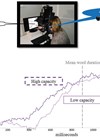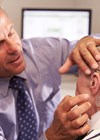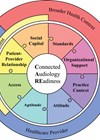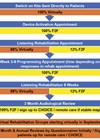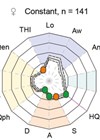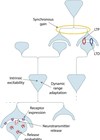Audiology features
Cognition and hearing – you can’t test one with the other!
Cognitive Psychologist, Boaz M Ben-David, provides insights into the import of considering cognitive factors when assessing speech perception ability to maximise intervention success. Failing to do so, he suggests, is “ageist”, a predisposition healthcare professionals must avoid. Cognitive performance is...
Working with people with hearing loss and dementia
A member of the SENSE-Cog team in the UK, Dr Littlejohn provides an overview of multidisciplinary recommendations for diagnosis, management and care of older adults with hearing loss, vision loss and dementia. She underscores how consideration of hearing status when...
My experience of implementing remote care during COVID-19
When the COVID-19 pandemic hit, it is safe to say very few audiology services were fully prepared for the challenges it would pose. Gina Angley, Associate Director Adult Amplification Program, Vanderbilt University, tells us about her experience of preparing her...
Privacy and security in connected hearing healthcare
The COVID-19 pandemic has forced audiology services across the globe to find new ways of working. This has resulted in a rapid increase in the uptake of remote care and, with it, some new privacy and security considerations. Connected hearing...
Are you ready? How audiologists’ readiness for change relates to the implementation of remote care
Are we ready to deliver remote care? A question many of us have asked ourselves over the last year. Danielle Glista (Associate Professor, Western University) and colleagues talk through a systematic approach to implementing remote audiological care and suggest gaps...
Development and review of a blended service in response to COVID-19
The COVID-19 pandemic has required healthcare services globally to show both resilience and ingenuity in redesigning services to meet the ever-changing needs of our patients. We hear about the redevelopment of clinical pathways within an hearing implant service, and the...
On the influence of sex on tinnitus burden and its phenotypes
One important aspect of the new paradigm in tinnitus research is to question basic assumptions. What associations does the sex of a person have with their experience of and reaction to tinnitus? Chris Cederroth raises the question and tells us...
In conversation with Professor Jos Eggermont
Having known Jos for many years, I jumped at the opportunity to catch up with him for our Nov/Dec 2020 series of tinnitus items. My questions reached him during lockdown, and he was enjoying the chance to get on top...
The benefits of mindfulness for tinnitus
Mindfulness-based psychological therapy for tinnitus has, in recent times, been the subject of well-designed clinical research that demonstrated impressive benefits. Dr Liz Marks guides us through this field, and advocates for better access and availability of these techniques. Mindfulness can...
Diagnosing and managing somatic tinnitus
Interactions between auditory and somatosensory pathways can lead to interesting tinnitus experiences which can be very bothersome. Dr Sarah Michiels describes her pioneering work in this area, and the possibilities of physiotherapy based therapy. Background Somatic (also called somatosensory) tinnitus...
The role of prediction and gain in tinnitus
Dr Will Sedley is a Clinical Academic Neurologist who has done groundbreaking work in the field of tinnitus mechanisms. Here, he introduces and explains the concepts of prediction and of gain as they relate to troublesome tinnitus. This article focuses...
Barriers to cochlear implantation in low resource settings
The benefits of early detection and rehabilitation of hearing loss in children, especially through cochlear implantation, are unequivocal. However, access to these valuable resources is far from equal and universal. Identifying the barriers is the first major step in addressing...


